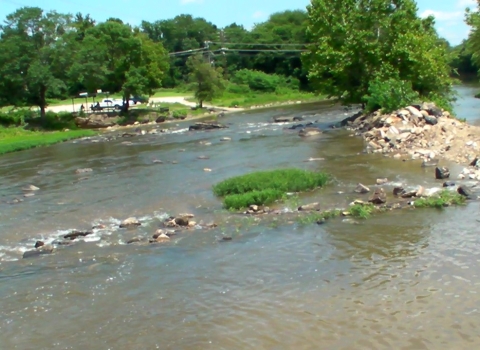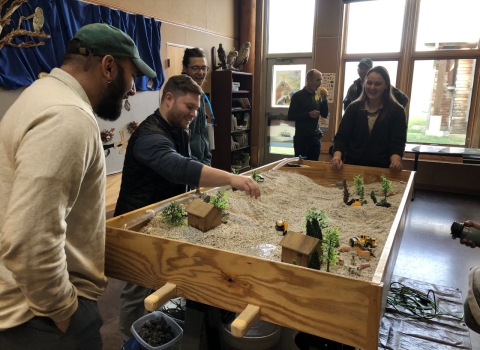Projects and Research
The Service’s National Fish Passage Program provides funding as well as engineering support for habitat restoration projects. The Eastern Brook Trout Joint Venture and the Atlantic Coast Fish Habitat Partnership also help support habitat restoration in Virginia with funding and technical support coordinated through this office.
Since 1999, our office and our partners have removed over 25 barriers to fish passage fish passage
Fish passage is the ability of fish or other aquatic species to move freely throughout their life to find food, reproduce, and complete their natural migration cycles. Millions of barriers to fish passage across the country are fragmenting habitat and leading to species declines. The U.S. Fish and Wildlife Service's National Fish Passage Program is working to reconnect watersheds to benefit both wildlife and people.
Learn more about fish passage , and opened over 1800 miles of rivers. These efforts will contribute millions of dollars in economic value to Americans every year, through increased tourism, fishing, and recreation. These projects also improve water quality, increase safety for people recreating in rivers, and protect public and private property from impacts of flooding.
The Harvell dam had blocked migration of river herring and other migratory fishes for over 70 years. There is even historical evidence of a dam structure near the site dating back to the mid-1700s.
Together, these structures impounded the river’s flow, and blocked upstream movement of American shad, river herring, hickory shad, striped bass and American eel for centuries....
Across the landscape, undersized, aging and improperly placed road-stream crossings create barriers in our rivers, streams, and tidal wetlands. These structures fragment aquatic habitat and prevent or greatly reduce the ability of aquatic species to move freely to migrate, feed, and reproduce. These poorly designed structures are also more prone to clogging, causing flooding, and washing out...




